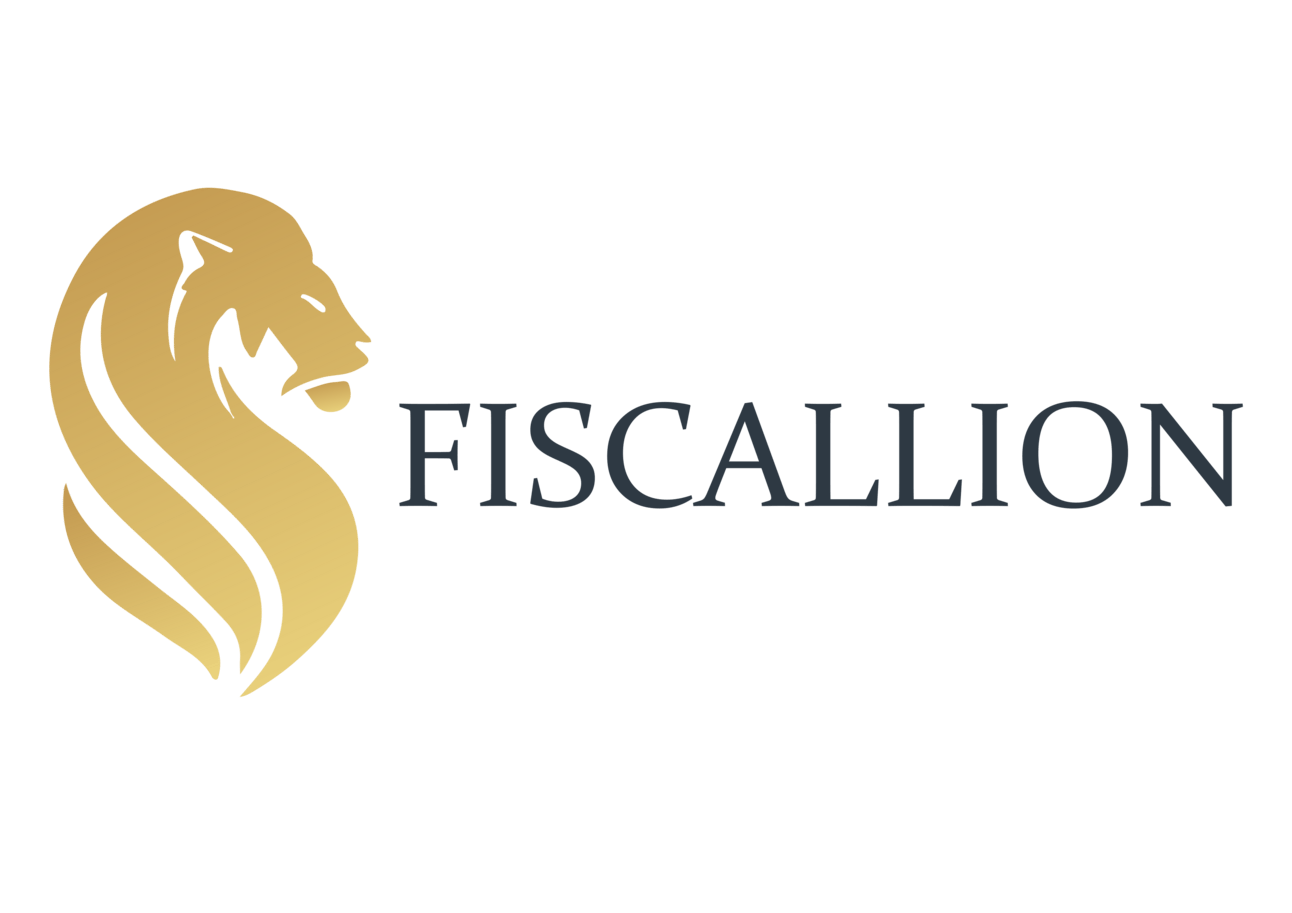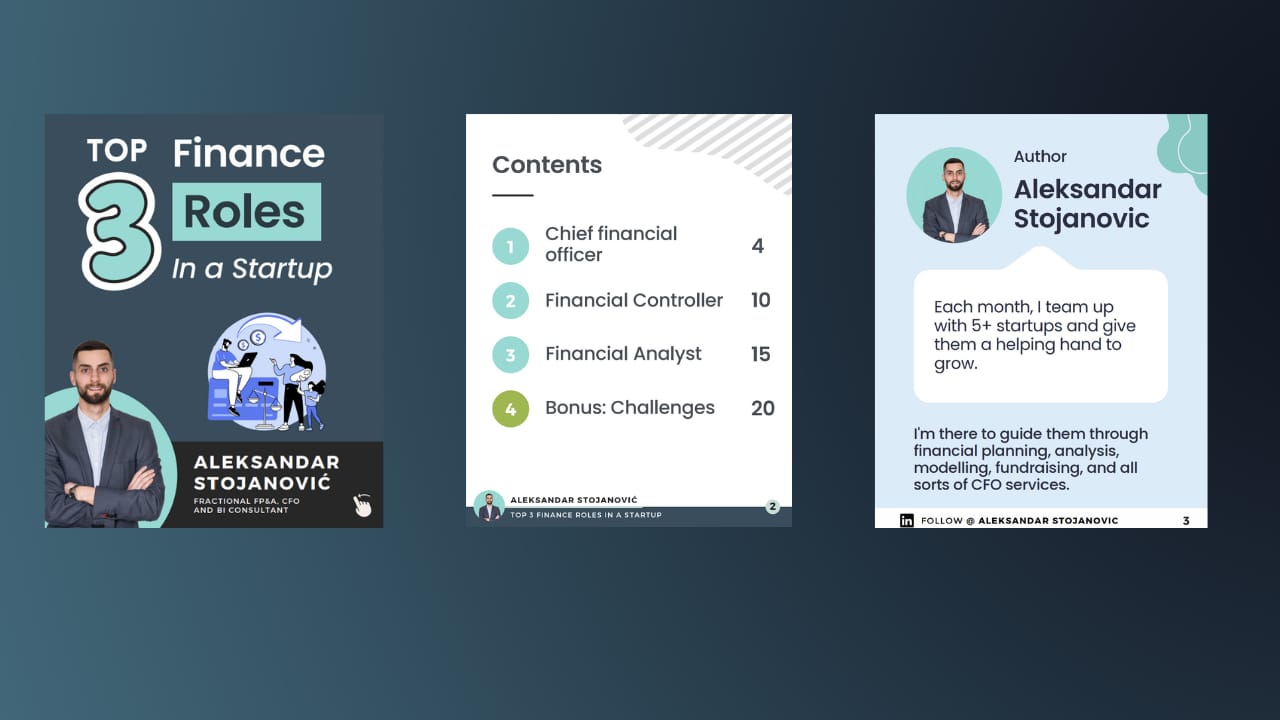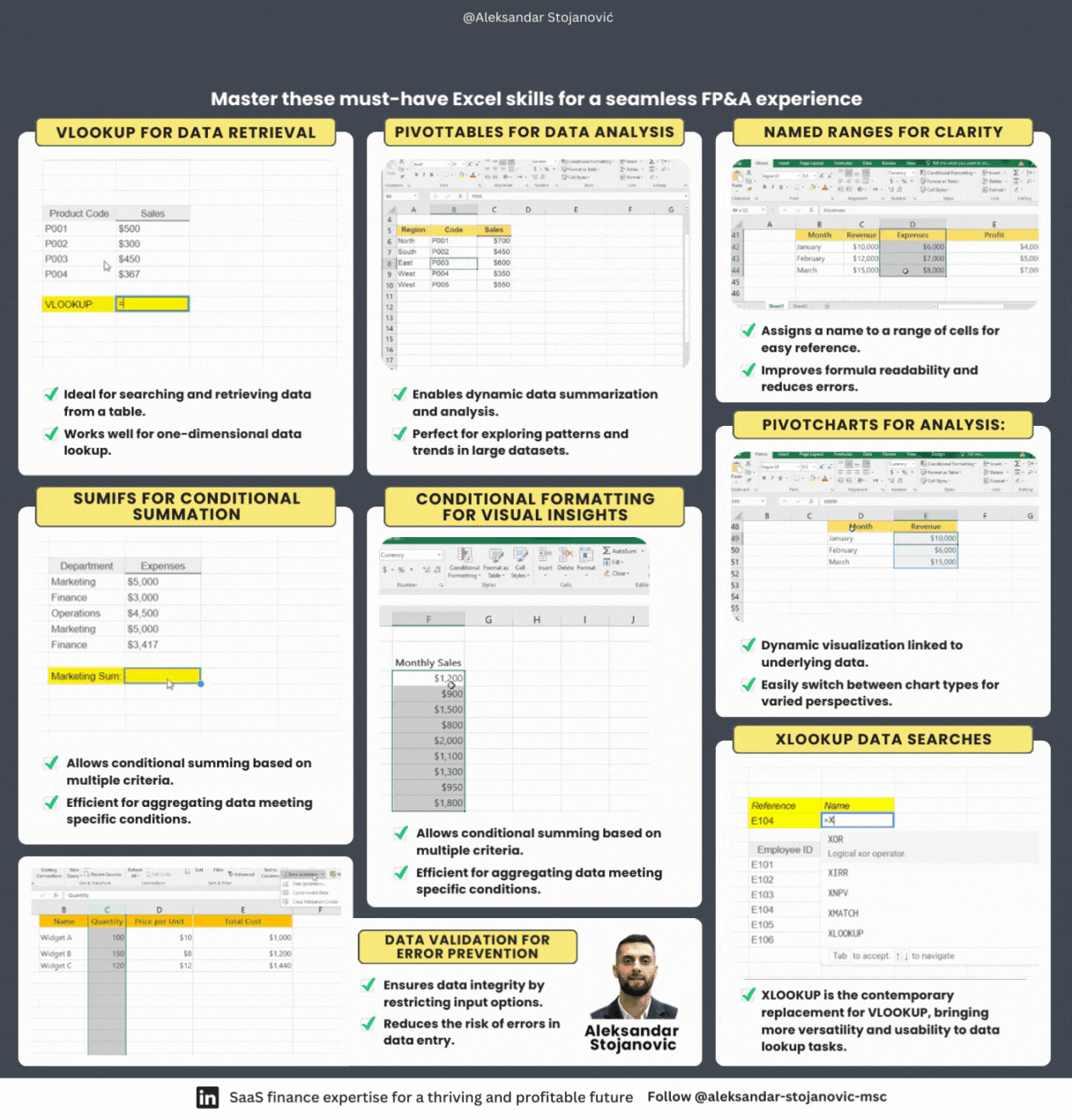👋 Welcome to the 68 new Founders & Finance Pro’s who joined us since last Saturday. If you haven’t subscribed, join 5,000 people getting smarter.

WELCOME TO ISSUE NO #09
Consulting | Shop | Website | Newsletter | Speaking | Training
📆 Today’s Rundown
Happy Saturday! This week I’ve compiled some amazing resources that will definitely impress you.
TL;DR
💰 SAFEs and Pre vs Post Money Valuations
💻 Finance Tech Stack
📊 8 Excel Skills for FP&A Professionals
I’ve partnered with my friend David Fortin to bring you an incredible opportunity to excel your career & your business with AI. More details below.
My friend Josh Aharonoff launched his new Excel Plugin - Model Wiz and finance pro’s & founders are amazed. So if you’re looking to elevate your career or business, check it out below.
👇 Watch: The Changing Financial Dynamics of B2B SaaS and Tech Companies by Chris
Just a heads-up - this email’s sprinkled with affiliate links. If you fancy exploring them, it’s a great way to back this newsletter!

Bonus Story

The 🚀 Cheat Sheets v1.0 packed
Welcome to my Guide for Top 3 Finance Roles in a Startup. Here contains all the information you need to see top 3 hires in a Startup & Challenges.
This eBook is designed to help businesses, employees, students and others to understand who top 3 hires are, what are the pros and cons, and what are the challenges.
Here's what you will receive:
→ 25+ PDF Pages
→ Top 3 hires (incl. pros & cons)
→ Challenges

Ever dreamt of crafting stories, sharing insights, or building a community around your passions?
Now’s the perfect time to start your own newsletter. Whether it's about tech trends, personal journeys, or niche hobbies, your voice matters.
Bring your ideas to life and join a thriving community of creators.
Who knows where your words might take you?

SAFEs and Pre vs Post Money Valuations
Disclaimer: Opinions are my own. Not investment advice. Do your own research.
TL;DR:
SAFEs (Simple Agreements for Future Equity): A creative alternative to priced equity rounds or debt.
Key Differences from Convertible Notes:
Not debt
Do not carry interest
No maturity date
Conversion to Equity: SAFEs convert to equity when the company raises a priced round in the future or is sold.
Valuations:
Pre-Money Valuation: The company’s valuation before cash is injected.
Post-Money Valuation: The pre-money valuation plus the cash raised.
What’s a SAFE?
The Simple Agreement for Future Equity (SAFE) was invented by Y Combinator in 2013. It allows initial investors to fund a promising business concept without the need to determine a valuation right away.
Key Points about SAFEs:
Invented by Y Combinator: Created to simplify early-stage fundraising.
Avoids Immediate Valuation: It’s challenging to price shares for an idea still on paper.
Neither Debt nor Equity: A SAFE doesn’t accrue interest and has no maturity date.
Conversion to Equity: Converts into equity when the company raises a priced round or gets acquired.
On the surface, SAFEs are, as their name suggests, simple. However, financial analysts can add complexity with various features and terms. We’ll explore some of these nuances later.
But before we go any further, what’s the difference between pre and post money?
Pre Money vs Post Money
Pre-money valuation is the hypothetical valuation that founders and investors agree upon before the investment is made. It represents the company’s worth before any new capital is added.
Post-money valuation is the company’s valuation after the investment terms are agreed upon and the capital is received. This valuation includes the latest capital injection, making the company theoretically worth more due to the added funds on its balance sheet (read: bank).
Post Money = Pre Money Valuation + Investment
Example:
Acme Co. is raising $5M on a $30M Pre Money
Post Money = $30M + $5M = $35M
With this foundation, let's explore some SAFE scenarios and understand how they function in different contexts.
Valuation Caps
A valuation cap sets a ceiling on the price at which a SAFE will convert to stock ownership in the future. It is the maximum valuation at which an investor can convert a SAFE into equity, ensuring that the investor's conversion price is capped once shares are issued.
Why Are Valuation Caps Important?
Valuation caps protect investors by guaranteeing a minimum ownership percentage, even if the company’s valuation exceeds the cap during subsequent funding rounds. Without a cap, an investor’s stake could be significantly diluted if the company's value increases rapidly.
Let’s go through an example.
Investor A invests $200K on a $4M post-money cap.
Investment: $200K
Post-Money Cap: $4M
Guaranteed Ownership: 200𝐾 / 4𝑀 = 5%
This means Investor A is guaranteed at least 5% ownership of the company, regardless of the company’s valuation in future rounds.
What Happens in Future Rounds?
Six months later, the company raises funds at a $6M post-money valuation. Despite the higher valuation, Investor A’s position is still 5%. Thus, their $200K investment converts to $300K worth of equity, reflecting the 5% ownership in the $6M company.
Sophisticated investors typically insist on a valuation cap to protect their investment. Without a cap, their investment could be diluted if the company's valuation significantly increases.

When the Series A valuation is huge and the cap saves you from dilution

Unlock Your Potential: Master Microsoft Copilot Today!
Enhance Your Skills. The course that helps business professionals go from AI beginners to AI proficient so they can enhance their productivity.
Discover tips, tricks and features you didn't even know existed. This course is designed to help complete ai rookie save hours in their professional tasks.

Finance Tech Stack
Are you aiming for growth but struggling with managing your finances effectively?
You're not alone. Many companies face challenges in finding the right tools and systems to streamline their financial operations.
In this edition of "the Startup Finance," we delve into the essential components of a finance tech stack that can revolutionize your business.

What is a Finance Tech Stack?
A finance tech stack is a collection of software applications that work in tandem to handle the financial operations of your business. It can encompass tools for:
Planning & Forecasting: Craft accurate budgets and predict future financial performance.
Record Keeping: Maintain meticulous records with ease and compliance.
Financing: Manage funding sources and capital effectively.
Execution: Ensure smooth daily financial operations.
Why is it crucial?
A well-structured finance tech stack can save you time, money, and stress by automating and simplifying financial tasks. It provides enhanced visibility and control over your financial performance and health.
Key Benefits of a Robust Finance Tech Stack
Generate Insightful Reports and Dashboards: Make informed decisions with real-time data analytics.
Track Key Financial Metrics: Keep a close eye on your financial health with precise KPIs.
Automate Accounting Processes: Free up your team’s time by streamlining routine tasks.
Streamline Budgeting and Forecasting: Facilitate efficient and accurate financial planning.
Ensure Compliance: Meet all tax and regulatory requirements effortlessly.
Interested in a consultation?
Send me a message or book a free call. Let's transform your financial operations together!


Visit Fiscallion.io to learn more
Partnering with the us enables you to avoid surprises, provide financial and strategic context and ensure that the company is on the right track.
✔ Financial Model Updates and Ongoing Maintenance
✔ Board Reporting and Investor Relations
✔ Budgeting and Scenario Planning
✔ Detailed Month-End Analysis
✔ Advanced Metric Tracking
✔ Get More Clarity
✔ Save Time

8 Excel Skills for FP&A Professionals
Mastering Excel is crucial for any FP&A professional. Here’s a breakdown of the must-know features that can transform your financial analysis and planning.
1️⃣ VLOOKUP
Why it's crucial: Quickly retrieving data from massive spreadsheets saves time and reduces errors. It's a classic for a reason!
2️⃣ PivotTables
Think of it as a treasure map: PivotTables help you navigate through numbers and find patterns that inform critical business decisions.
3️⃣ Named Ranges
Keep it clean: Named ranges make your formulas easy to read and maintain, keeping your mind sane and your spreadsheets organized.
4️⃣ SUMIFS
Multi-condition summation: This powerhouse function acts like a personal assistant, sifting through the data for you with ease.
5️⃣ Conditional Formatting
Visualize data trends: Make your data come alive with Conditional Formatting. Spot trends and outliers at a glance without digging into the details.
6️⃣ PivotCharts
Data storytelling: PivotCharts turn data into dialogue, essential for impactful presentations and conveying the story behind the numbers.
7️⃣ XLOOKUP
The new star: Embrace XLOOKUP for its flexibility and improved functionality. Think of it as the latest model with all the upgrades compared to VLOOKUP.
8️⃣ Data Validation
Prevention over cure: Data Validation helps you avoid data-entry errors, a crucial aspect of maintaining accuracy in financial analysis.
Pro Tip: Master these Excel features one at a time, applying each to real scenarios. This method ensures the skills stick and helps you become the Excel MVP your team relies on.

If you’re looking to elevate your career or your business, check out Excel Plugin - Model Wiz by Josh.
These are the templates that made Josh skyrocket his career & his business, too.

Earn free gifts 🎁
You can get free stuff for referring friends & family to my newsletter 👇
50 referrals - Cash Flow Models Bundle 💰
10 referrals - SaaS Financial Model 📊
{{rp_personalized_text}}
Copy & Paste this link: {{rp_refer_url}}

FEEDBACK
How would you rate today's newsletter?
If you have specific suggestions or feedback, simply reply to this e-mail.

How can I help you?
Book a Growth Call: Looking to scale your company? Book a growth call with me and let's strategize on how to propel your company to new heights. Click here to schedule your session.
Reserve me for a Keynote Speaking: Elevate your events with my keynote speaking arrangements. Whether it's a conference, seminar, webinar or corporate event, I'm here to engage and inspire your audience with insights into strategic finance. Reach out here to discuss your event.
Dive into 1:1 Coaching: Personalized coaching can make all the difference. Let's work together to navigate the complexities of finance and set you on the path to success. Click here to start your 1:1 coaching journey.
Sponsor an Issue of the Startup Finance: Want to reach a dedicated audience of founders & finance enthusiasts? Consider sponsoring a future issue of the Startup Finance. Contact me here for sponsorship details.
Leave a Testimonial: I would appreciate if you could leave a 5-star rating for this newsletter if you enjoyed it here.
Thanks so much for reading.
Aleksandar




